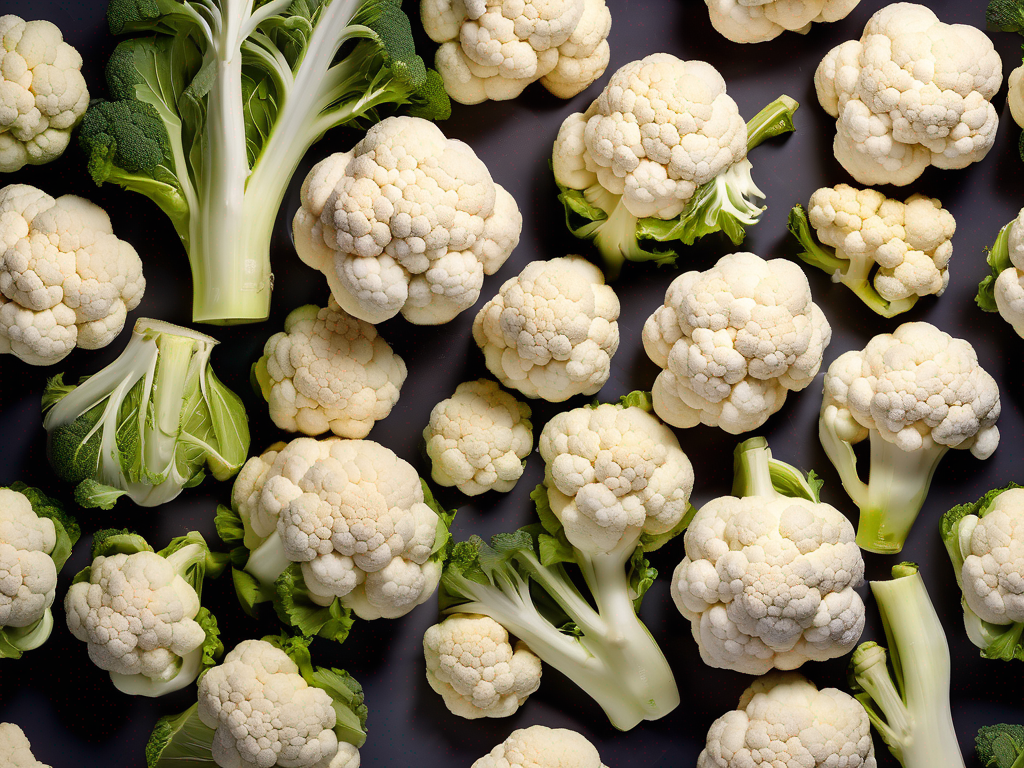
The Best Way to Store Cauliflower to Prevent Spoiling Quickly
Get Your Free Food Safety Cheat Sheet
30 most common foods with instant answers. Print it and stick it on your fridge—completely free!
The Best Way to Store Cauliflower to Prevent Spoiling Quickly
Cauliflower is a versatile and nutritious vegetable that can be enjoyed in a variety of dishes, from roasted cauliflower steaks to cauliflower rice. However, like many fresh produce items, cauliflower is prone to spoiling quickly if not stored properly. In this blog post, we will explore the best ways to store cauliflower to help extend its shelf life and maintain its freshness. (Cauliflower)
Understanding Cauliflower Storage
Before delving into the specific storage methods, it's essential to understand the factors that can impact the shelf life of cauliflower. Here are some key points to keep in mind:
Factors Affecting Cauliflower Spoilage
- Temperature: Cauliflower is sensitive to temperature fluctuations. Storing it at the right temperature is crucial to prevent premature spoilage.
- Humidity: Cauliflower prefers a moderately humid environment. Excessive moisture can lead to mold growth, while low humidity can cause dehydration.
- Air Circulation: Proper air circulation is essential to prevent moisture buildup and maintain freshness.
- Ethylene Sensitivity: Cauliflower is sensitive to ethylene gas, which is produced by certain fruits and vegetables and can accelerate ripening and spoilage.
Best Practices for Storing Cauliflower
Now that we have a better understanding of cauliflower storage requirements, let's explore the best practices for storing cauliflower to prolong its freshness:
1. Refrigeration
- Remove Leaves: Trim any excess leaves from the cauliflower head before storing.
- Store in a Perforated Bag: Place the cauliflower in a perforated plastic bag to maintain humidity levels while allowing for air circulation.
- Crisper Drawer: Store the cauliflower in the crisper drawer of the refrigerator, where humidity levels are often higher.
2. Temperature and Humidity
- Optimal Temperature: Store cauliflower at temperatures between 32°F to 35°F (0°C to 2°C) for best results.
- Moderate Humidity: Aim for a moderate humidity level of around 90% to prevent dehydration.
3. Avoiding Ethylene Exposure
- Isolate from Ethylene Producers: Keep cauliflower away from ethylene-producing fruits and vegetables, such as apples, bananas, and tomatoes.
- Ethylene Absorbers: Consider using ethylene-absorbing sachets or containers to minimize ethylene exposure.
4. Preparation Tips
- Cut Just Before Use: To maximize freshness, cut or break the cauliflower into florets just before cooking or consuming.
- Storage Duration: Use cauliflower within 3 to 5 days for optimal freshness.
Conclusion
By following these storage guidelines, you can prolong the shelf life of cauliflower and ensure that it stays fresh and flavorful for longer. Proper storage not only helps in reducing food waste but also ensures that you get the most out of this nutritious vegetable. Remember to check your cauliflower regularly for any signs of spoilage and discard any damaged or moldy pieces to prevent cross-contamination.
Cauliflower is a versatile ingredient that can elevate a wide range of dishes, so make the most of it by storing it correctly. With the right storage practices in place, you can enjoy the goodness of cauliflower in your meals while minimizing waste.
For more information on cauliflower and other food storage tips, visit cauliflower. (Cauliflower)
Authoritative Food Safety References
These agencies and university labs inform every tip and health precaution we publish.
USDA FoodKeeper – Cold Storage Guidelines
Official refrigerator, freezer, and pantry timelines maintained by the U.S. Department of Agriculture.
Visit USDA FoodKeeperFDA Produce Safety Rule & Grower Guidance
Field-to-fridge handling practices that prevent contamination of fruits, vegetables, and leafy greens.
Visit FDA Produce SafetyCDC Foodborne Illness Prevention Hub
Surveillance-backed guidance on pathogens, symptoms, and steps to reduce foodborne illness risk.
Visit CDC Food SafetyUC Davis Postharvest Technology Center
University research detailing optimal storage atmospheres for produce after harvest.
Visit UC Davis PostharvestPenn State Extension – Home Food Preservation & Safety
Peer-reviewed extension bulletins on safe canning, chilling, and reheating practices.
Visit Penn State ExtensionGet Your Free Food Safety Cheat Sheet
30 most common foods with instant answers. Print it and stick it on your fridge—completely free! Want more? Upgrade to the complete guide with 70+ foods.
Scan your food directly and get instant safety info using our AI-powered camera feature.